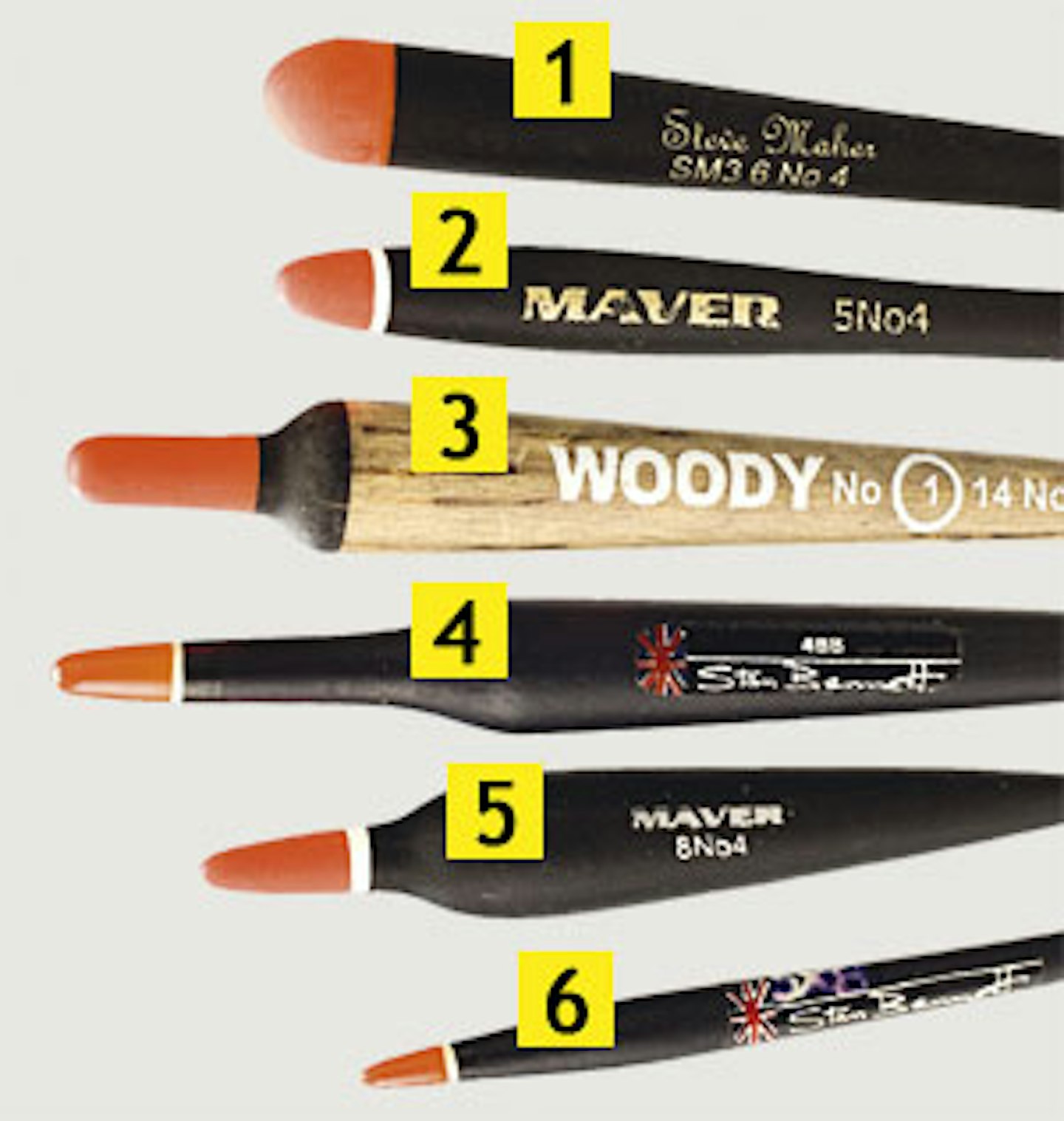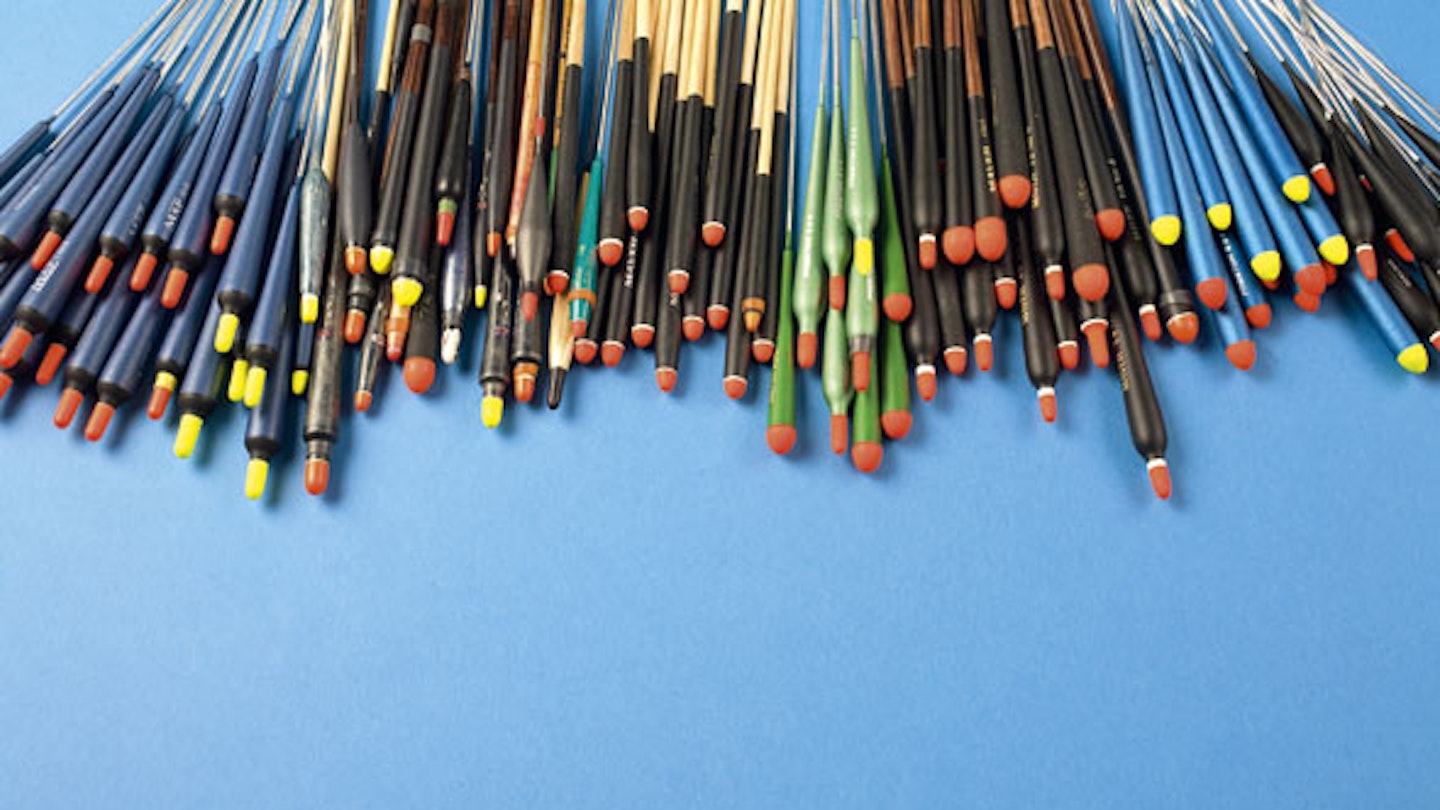For some anglers, fishing a river with a stick float is the purest form of fishing. The stick float is designed to fish running water only. It is attached top, bottom and middle, via lengths of soft silicone, unlike a waggler, attached bottom only.
The aim is to smoothly run a hookbait through the swim to mimic the free offerings the angler is feeding. Putting a float through a moving water swim like this is called ‘trotting.’
Sometimes, the fish will want a bait trotting (travelling) at the same speed as the current. Sometimes, they’ll want one that moves slightly slower than the natural pace of the river. To slow down the hookbait the angler will have to ‘hold back’ his float. He does this by controlling the speed that line off his reel spool against the force of the current.
Stick floats are rated for capacity in exactly the same way as wagglers. As a general rule, aim to pick a stick float with 1xNo6 shot capacity for every foot of depth in the swim – so choose a 6xNo6 float for a 6ft deep swim. The two main types of dropper shot on stick floats are No6 and No8.
Two main shotting patterns exist – either ‘shirt button’, or ‘bulked’. Stick float rigs should be cast gently underhand to lay the shot out in a line and to avoid tangling.
Shirt Button shotting
Shot are placed down the line every six inches or so. The heaviest (No6) shot should be at the top, with the lightest (No8) at the bottom. This gives a slow, even drop so fish can grab the bait as it falls though the water, often referred to as ‘on the drop.’
Bulk shotting
Heavy shot (from No6 to BB) are bulked three quarters of the way down the line, with smaller ‘dropper’ shot below them. These larger shot are used to bomb the bait down through the water faster when target fish are on the deck in deep water.
There are many designs of stick float, with each pattern designed to tackle a different depth, speed of water, wind conditions, fishing range, or different species of fish.
There are also many different types of sight tips from bulbous heads that can be easily seen on a long trot down the swim, and tiny, pointed ones for delicate, close-range roach and dace work.
Some have ‘shoulders’ so that the float can be held back against the flow to slow the hookbait down, without the tip rising clear of the water. There are four main categories:
Light Cane Stick
A small, streamlined balsa body on a cane stem. Ideal for presenting close to the bank on slow to medium paced rivers when fishing for roach, dace and chub. Cane stick floats lay flat on the surface and will begin to cock as each shot comes to rest underneath the float. These are the best floats to use when fishign baits 'on the drop'.
Plastic Stem Stick
The cane stem has been replaced with a more robust and slightly heavier plastic variety. These floats stand upright when dropped into the water and are therefore provide added stability when fishing pacey, fairly turbulent rivers or streams.
Wire/Alloy Stem Stick
The metal-stem stick is designed to be more stable in ‘boiling’ swims. The slim but heavy wire or alloy semi cocks the float, so less shot is needed down the line.
Lignum Stick
Made from heavy African wood for fishing well out from the bank. These floats are perfect for flicking out good distances, due to the weight in the float, therefore if you need to trot the central glide or even the far bank of a river swim, a lignum stick would probably be the best float to use.
CONTROLLING A STICK FLOAT
Fishing with a stick float requires a different technique than fishing a waggler, mainly because the float is constantly on the move. Not only will you have to watch the float for bites, but you'll need to keep an eye on it to make sure it travels downstream in a straight line (so the bait travels downstream naturally).
TIP CHOICE

DAVE-STICK.jpg
- This one’s for trotting a long way down the swim. You’ll see the large tip at distance.
- A standard dome top stick like this is suitable for most jobs on normal flowing rivers.
- This big ‘Bolo’ is for very deep, fast rivers where you need lots of weight to sink the bait.
- A combination of float 5 and float 6. Use on fast water but retain delicate bite indication.
- This pronounced bullet-shape tip and large ‘shoulder’ is for holding back in fast water.
- This fine sight tip is for spotting delicate bites from roach and dace at close range.
